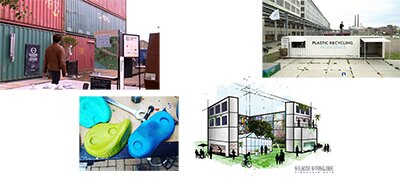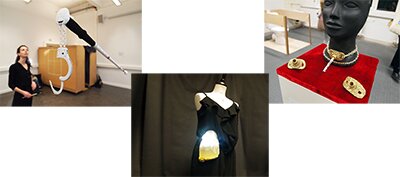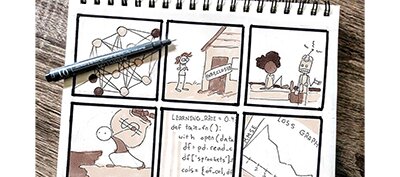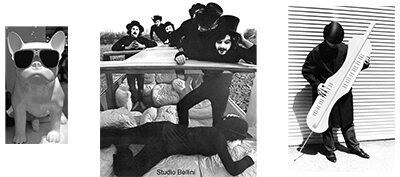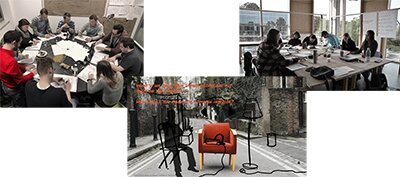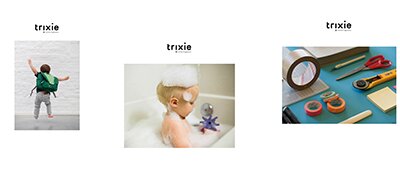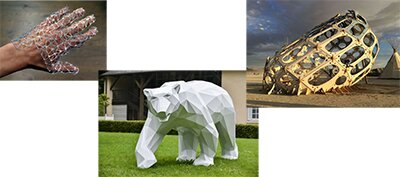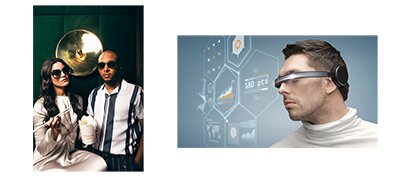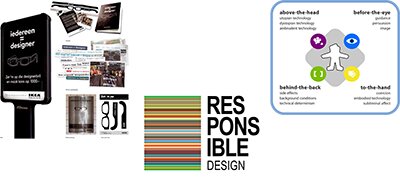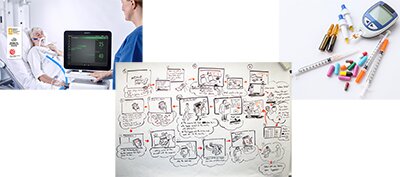#1 Plein Plastic - Using plastic waste as a resource
by Vadim Van den Heuvel and Hannes Dams
Antwerp mourned after the popular hotspot Plein Publiek was shut down in March 2018. Luckily – not too long after – they picked up where they had left off, creating an upgraded version in collaboration with Circular South (www.circulairzuid.be). This joint venture aims to inspire people and educate visitors on the importance of a more circular economy. Their restaurant hosts a zero-waste kitchen with retired meat, bycatch fish and vegetables and herbs that are grown on site in one of the containers. Even the cocktails they serve are zero-waste!
Today, a new project is growing from the Plein Publiek containers to create additional ways to recycle PET and other plastics. Traditional recycling is one way to contribute, but many plastic bottles we throw into today’s (single-stream) system get too dirty to be turned into new bottles. And, worse, they’re down-cycled into materials and products that are even more difficult to recycle, so we have to extract more raw materials and use additional energy to make new bottles. Together with our partners we are working on an alternative long term solution for plastic and PET-recycling.
When recycling plastic bottles we create two valuable residual flows: (1) the collection of PET, and (2) HDPE caps. Whereas the first will be used to study the quality of re-usable PET and included in the production of sunglasses by our partner W.R.Yuma, it’s the latter that will be the topic of this workshop. The primary idea is to use HDPE caps to - literally - raise Plein Plastic and Plein Public to a higher level in the form of a bouldering wall. We aim to design the climbing handles using the caps and create awareness on circular economies using the fun of a publicly funded and recycled climbing wall. This sounds easier said than done, and that’s exactly why we need you .. !! With the necessary team buildings and trendy locations, we will make it an unforgettable week.
#2 Fighting Stigma with Critical Design
by Anne Britt Torkildsby
The world is facing one crisis after another, and the next generation of designers will most likely face challenging issues relating to inclusion, equality, and diversity at some point in their careers. Thus, they – as the future ‘universal design thinkers’ (Torkildsby, 2017), must be adequately equipped with methodological tools, as well as valuable experiences of interdisciplinary work.
One way to this is by Fighting Stigma with Critical Design.
In short, ‘Critical design’ is all about using design to explore issues and ask questions, rather than directly providing answers/solutions to problems. In doing so, critical design can promote new ways of thinking about the design of assistive technology – a product category that today seems to provoke stigmaburdened responses amongst people.
The results of using critical design during a design process is called ‘Critical Design Examples’ (CDEs; Torkildsby, 2014), which, in the context of this workshop, aims to question the student’s assumptions and preconceived ideas about design and product stigma. The take-away from participating in this workshop is basically that the students get hands on experience of how to design in order to eliminate prejudice and discrimination – hence better ensure that stigma is a high priority when developing future products, services, environments, etc.
#3 Story telling a concept
by Filip Fransen and Frederic Snauwaert
Do you know that feeling of having a great idea in your head but fail to convince others why it is so amazing? Or you worked hard for weeks working out a concept into the very detail, and then you struggle to really explain it well as an elevator pitch because you go on and on about details? If that sounds familiar this workshop may be your chance to turn this around.
In this 5 day sprint you will work in small groups and go step by step through the process of creating a 1 minute pitch, focusing on what matters, and resonates with the audience. Let’s aim at producing a video or an animated footage. You never know if we post it, it may go viral!
#4 DESIGN-GIG
by Ds & Dar (David Sherriff and Alec Robertson)
Design adds value to products. This has evolved over time from embodying valuable materials into individual objects to creating useful things with advanced technology that do useful actions. Today, value is being added by connecting things to Apps, and things to systems of products in their environments. This adds value by providing ‘services’ to people and valuable 'experiences' to them as they use things. But people also are losing control of the product they use when data from their exciting lives are harvested for sale and they become the product to be sold onto others. Tomorrow people will take back control of products and their life value for themselves. Things will also be designed to engage in a performance with people to add value to them.
This Workshop explores how in the future people could take-back-control and add value to their lives through creating unique individual actions with things - the DESIGN GIG.
You will engage designing of 'performance art' along with 'utility' when using things. You will learn about notating Design Gigs as designs and have a video of your Design Gig. You will have some crazy fun too.
definitions
GIG: 1. a single performance by a musician or group of musicians
DESIGN GIG: 1. a design that adds value through a single performance by a person, thing, or group of people with things to enrich their lives, especially at work
#5 Visualizing as a design tool
by Susie Brand-de Groot
Visualization is the language of the product designer, and probably the most essential skill. During the complete course of a design process, there is a constant need for communication. Visualization enables this communication, with oneself, colleagues, users, managers, clients, and so on...
Depending on the goal, audience and stage of the design process various kinds of visualization techniques are used by the designer to communicate his/her discoveries, findings, ideas, concepts, techniques, context, (human) interaction and (final) outcomes.
During a range of workshops, I’d like to dive into a full design process to experience what kind of visualization techniques are suited for the various stages of the process. The workshops will largely focus on sketching techniques with all kinds of materials and tools. Additionally, collage techniques and Photoshop will be explored during the week. At the end of the week the week we will present the work in an exhibition.
#6 What if we took your living rooms and put them on the street?
by Ricarda Jacobi and Henrik Mucha
What if we took your living rooms and put them on the street? How would you make it a common interior?
It is these kinds of questions that can be starting points for creative adventures. We want to explore radical approaches for creating public social spaces at the intersection of interior architecture and technology. Technology continues to fade into our built environment. In other words, designing stuff is designing interactive systems. Yet, we hardly need more stuff but have to figure out how to use the existing and make it smarter through technology - for the planet and for our communities. In that regard, design has to be the mediator between what is technologically feasible and what is desirable by humans. Sounds good, aye? But what does it mean and how do we plan, build, and run such common places that foster human communication and interaction?
We are Ricarda and Henrik and we work where architectural thinking meets interaction design – and that is halfway. Our workshop approach emphasises design and innovation as a social process with diverse groups of people. Design is the tool to make that process happen. It creates spaces for exploration, communication, and above all resonance. Our design workshops across a wide field of topics from AI to social entrepreneurship to sketching aim to set the stage for going through experiences and acquiring new skills along the way.
#7 Infinite imagination & baby bath toys
by Margaux Verbist
At Trixie, we are eager to create a playground from which children's immense creativity and imagination can take flight.
Trixie offers everything one needs to make a little newborn feel right at home! Apart from all bedroom essentials and decorative elements, Trixie provides qualitative bath and nursery products, all must-haves for a cosy mealtime, toys that guarantee hours of fun and handy accessories for when you’re out and about. Trixie is known for spot-on colours, cheerful prints and quirky animals. With each new development, Trixie strives to make the most ecologic and durable choice.
During the workshop week, we will explore how we can apply this creative mindset to baby bath toys. How can we conquer the baby bath toy range in an innovative way, that perfectly matches our Trixie identity and ecologic mindset? Which fun effects can we discover by exploring the basic physics of water, air, soap, bubbles, etc.? With a very hands-on approach, we will look for ways trigger the imagination of babies and children and give them hours and hours of fun in the bath tub!
Let's unleash our imagination and put all our ideas to the test, plashing around in our own big pool!
#8 Let's build a physical low poly model
by Gert Verheule
Domes, zomes, dodecahedrons, icosahedrons, Buckyballs, … all of these are poly shapes.
These meshed type structures are basically made of straight lines of specific length connected at specific angles.
In this workshop you will decide what kind of object you would like to make and materialise it as a physical low poly model.
The main focus will not be pure on the design but on how you will build and present your model.
Your structure or object will have an irregular mesh.
How will you connect your rods, sticks, bars…?
What material will you use?
What color will it have?
What size will give the optimal wow effect?
Let’s build stuff.
#9 The Future of Eyewear
by Emiel Tormans
Do you love to design and think about the next bestselling Google glasses for Odette Lunettes? Get your glasses on and get ready for this workshop!
During the week we’re going to search for new futuristic ideas about eyewear. What functions could be in the glasses and what should it look like or will shape follow function? All different and interesting ideas in a changing world of eyewear. In the first days we will explore new techniques and functions, but we also get a look behind the scenes at Odette Lunettes. The second part will be about designing some new concepts and customer experiences. At the end we will prototype these ideas and line them up in the wall of fame.
Get ready for some spectacle ideas!
#10 Responsible Design
by Wouter Eggink
In the workshop we will explore the concept of responsible design. The word “responsibility” contains the verb “to respond”. One can therefore interpret responsible design quite literally by responding to the needs of society. “Design” in this respect is to be interpreted as an activity, not just as the mere outcome of a project or a ‘designed artefact’. In this sense, design as activity points towards action and change. To fit with the responsibility this change should of course be for the better. Problematic is naturally the question; what is better? and for whom? (or what?).
In our approach we can shape responsibility along three main lines:
- Designers acting responsibly.
- Enabling others in society to act responsibly.
- Producing things that do not destroy the world.
In the workshop we will explore the second line by researching the concept of “Open Script design”. Open script design means that designs are (more) open for interpretation by the user. Think of LEGO bricks versus a Barbie Doll. In theory, this will also delegate the responsibility to the users and enable them to ‘act responsibly’. So our challenge will be: can we -in practice- open up the script of a diverse range of artefacts and make them more ‘responsible’?
#11 Improving Lives of Diabetics
by Aydin Mert
In 2019, approximately 463 million adults (20-79 years) have been living with diabetes; by 2045 this will rise to 700 million according to International Diabetes Federation. Diabetes is a condition that impairs the body's ability to process blood glucose, otherwise known as blood sugar. Self-monitoring blood sugar levels is vital to manage the disease, and this brings a lot of challenges to patients’ life.
The aim of the workshop is to go back to basics of user centred design process to develop a new self-monitoring experience for diabetics where a glucose meter is used together with other means to manage the disease.
The workshop will use the principles of design sprint where students will practice how to create user journey maps, frame problems and create story boards, ideate, prototype and present (test with real users?). This way students will have the chance to understand how to tackle big design questions in a fast, efficient and structured way just like in industry.
